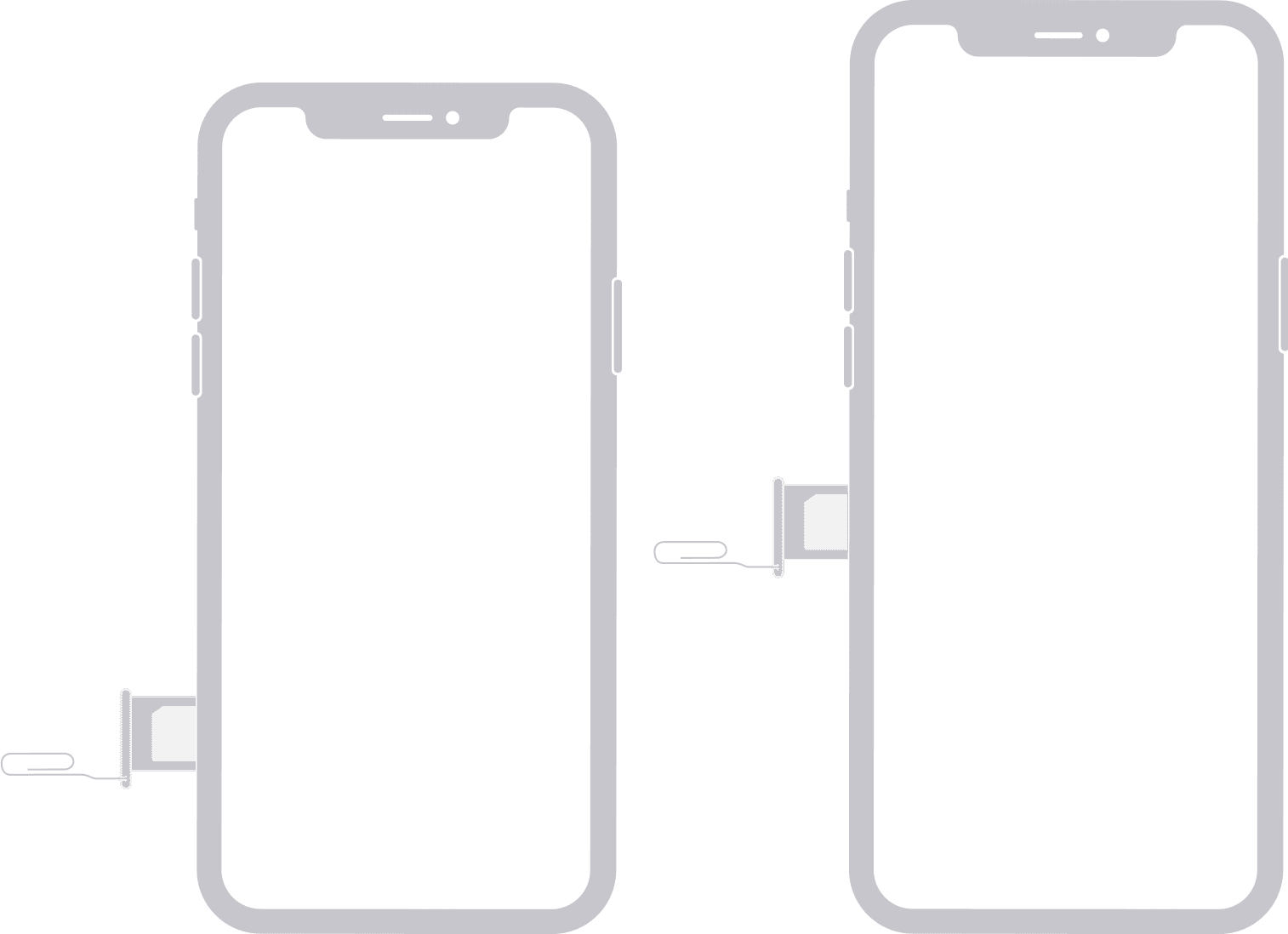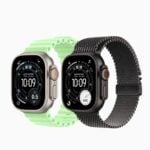The iPhone 16 does not have a SIM card slot in the US and continues Apple’s push for the adoption of eSIM technology. For users outside the United States, the iPhone 16 keeps a physical SIM card slot in addition to eSIM support, but there are plans in future generations to completely switch over to e-SIM technology. The dual approach for non-US customers caters to diverse global markets and user preferences.
Apple first began to remove the physical SIM card slot in the United States from the iPhone 14 / iPhone 15 lineup. This is because eSIM technology offers undeniable advantages in terms of convenience, flexibility, and design. The move to get rid of SIM-slots not only affects the future of eSIM but it also simplifies the device design and enhances water resistance.
iPhone 16 and the SIM Card Situation
The iPhone 16 series brought some exciting changes, but it also marked a shift in how Apple handles SIM cards. Whether you’re a fan of physical SIM cards or embrace the eSIM revolution, here’s what you need to know about the iPhone 16 and SIM card compatibility.
iPhone 16 and SIM Cards: At a Glance
| Model | SIM Card Slot in U.S.? | SIM Card Slot Outside U.S.? | eSIM Support | Dual SIM Support |
|---|---|---|---|---|
| iPhone 16 | No | Yes | Yes | Yes (dual eSIM) |
| iPhone 16 Plus | No | Yes | Yes | Yes (dual eSIM) |
| iPhone 16 Pro | No | Yes | Yes | Yes (dual eSIM) |
| iPhone 16 Pro Max | No | Yes | Yes | Yes (dual eSIM) |
No SIM Card Slot in the U.S.
If you’re buying an iPhone 16 model in the United States, you won’t find a physical SIM card slot. Apple has fully transitioned to eSIM technology for all iPhone 16 models sold within the U.S. This means you’ll activate your phone plan using an eSIM, which is a digital SIM embedded in the device.
SIM Card Slot Available Outside the U.S.

For those purchasing an iPhone 16 outside of the United States, the situation is different. All iPhone 16 models sold in other countries still include a physical SIM card slot. You can continue to use a nano-SIM card to activate your phone plan if you prefer.
Why the Difference?
Apple’s move towards eSIM technology offers several advantages, including:
- Convenience: eSIMs make it easier to switch carriers or activate a new phone plan without needing a physical SIM card.
- Flexibility: You can store multiple eSIM profiles on your iPhone, making it easy to switch between different lines or carriers.
- Space-saving design: Removing the SIM card slot allows for a more streamlined and compact phone design.
The transition to eSIM-only iPhones in the U.S. likely reflects the growing adoption of eSIM technology by U.S. carriers.

What About Dual SIM?
Even without a physical SIM card slot, all iPhone 16 models support dual SIM functionality. You can use two eSIMs simultaneously to have two active phone numbers or data plans. This is great for people who travel internationally or want to separate their work and personal lines.

You got it! Here’s a table of iPhone models and their SIM card slot situations:
| iPhone Model | SIM Card Slot (U.S.) | SIM Card Slot (Outside U.S.) | eSIM Support | Dual SIM Support |
|---|---|---|---|---|
| iPhone 16 | No | Yes | Yes | Yes (dual eSIM) |
| iPhone 16 Plus | No | Yes | Yes | Yes (dual eSIM) |
| iPhone 16 Pro | No | Yes | Yes | Yes (dual eSIM) |
| iPhone 16 Pro Max | No | Yes | Yes | Yes (dual eSIM) |
| iPhone 15 Pro Max | No | Yes | Yes | Yes (dual nano-SIM or nano-SIM + eSIM) |
| iPhone 15 Pro | No | Yes | Yes | Yes (dual nano-SIM or nano-SIM + eSIM) |
| iPhone 15 Plus | No | Yes | Yes | Yes (dual nano-SIM or nano-SIM + eSIM) |
| iPhone 15 | No | Yes | Yes | Yes (dual nano-SIM or nano-SIM + eSIM) |
| iPhone 14 Pro Max | No | Yes | Yes | Yes (dual nano-SIM or nano-SIM + eSIM) |
| iPhone 14 Pro | No | Yes | Yes | Yes (dual nano-SIM or nano-SIM + eSIM) |
| iPhone 14 Plus | No | Yes | Yes | Yes (dual nano-SIM or nano-SIM + eSIM) |
| iPhone 14 | No | Yes | Yes | Yes (dual nano-SIM or nano-SIM + eSIM) |
| iPhone 13 Pro Max | Yes | Yes | Yes | Yes (dual nano-SIM or nano-SIM + eSIM) |
| iPhone 13 Pro | Yes | Yes | Yes | Yes (dual nano-SIM or nano-SIM + eSIM) |
| iPhone 13 | Yes | Yes | Yes | Yes (dual nano-SIM or nano-SIM + eSIM) |
| iPhone 12 Pro Max | Yes | Yes | Yes | Yes (dual nano-SIM or nano-SIM + eSIM) |
| iPhone 12 Pro | Yes | Yes | Yes | Yes (dual nano-SIM or nano-SIM + eSIM) |
| iPhone 12 | Yes | Yes | Yes | Yes (dual nano-SIM or nano-SIM + eSIM) |
| iPhone 11 Pro Max | Yes | Yes | Yes | Yes (nano-SIM + eSIM) |
| iPhone 11 Pro | Yes | Yes | Yes | Yes (nano-SIM + eSIM) |
| iPhone 11 | Yes | Yes | Yes | Yes (nano-SIM + eSIM) |
| iPhone XS Max | Yes | Yes | Yes | Yes (nano-SIM + eSIM) |
| iPhone XS | Yes | Yes | Yes | Yes (nano-SIM + eSIM) |
| iPhone XR | Yes | Yes | Yes | Yes (nano-SIM + eSIM) |
| iPhone X | Yes | Yes | No | No |
| iPhone 8 Plus | Yes | Yes | No | No |
| iPhone 8 | Yes | Yes | No | No |
| iPhone 7 Plus | Yes | Yes | No | No |
| iPhone 7 | Yes | Yes | No | No |
| Earlier iPhone models | Yes | Yes | No | No |
Key Takeaways:
- iPhone 16, 15, 14 series (U.S. only): Completely eSIM-based, no physical SIM card slot.
- iPhone 13 series and earlier: All models have a physical SIM card slot, regardless of where they are sold.
- Dual SIM: Most newer iPhones (including the iPhone 16 series) support dual SIM functionality, allowing you to use two phone numbers or data plans.
I hope this helps! Let me know if you have any other questions.
Key Takeaways
- iPhone 16 models sold outside the U.S. include both physical SIM and eSIM support
- U.S. iPhone 16 models are eSIM-only, lacking a physical SIM tray
- Apple’s dual approach addresses varied global market needs and user preferences
Design and Build
The iPhone 16 series brings sleek design updates and new features. It blends familiar elements with exciting upgrades for a fresh look and feel.
SIM Card Integration
The iPhone 16 models sold in the US are eSIM-only. This means no physical SIM card slot. Other regions might keep the physical SIM tray. The move to eSIM frees up space inside the phone. It also makes switching carriers easier. Dual-SIM function is still possible with eSIM tech. Users can have two active phone numbers on one device.
Material and Color Options
The iPhone 16 Pro and Pro Max sport a new titanium design. This makes them lighter and stronger than before. Color options include Black Titanium White Titanium Natural Titanium and Desert Titanium. The back features textured matte glass. All models have Ceramic Shield front covers for better drop protection. The iPhone 16 and 16 Plus keep the glass and aluminum design. They offer a range of bright colors to choose from. All iPhone 16 models are IP68 rated for water and dust resistance.

Frequently Asked Questions
The iPhone 16 offers various SIM card options. These differ based on location and carrier support. Users have multiple choices for connecting to mobile networks.
Can I use a physical SIM card with the iPhone 16?
Yes you can use a physical SIM card with the iPhone 16 in most countries. The phone has a nano-SIM card slot. This applies to models sold outside the United States.
Is the iPhone 16 equipped with an eSIM-only configuration?
The iPhone 16 sold in the US is eSIM-only. It doesn’t have a physical SIM card tray. Models in other countries have both eSIM and physical SIM options.
Are there country-specific differences in SIM card slots for the iPhone 16?
Yes there are differences. US models are eSIM-only. Models in other countries like the UK Canada Australia Japan and China have physical SIM slots.
How does the SIM card functionality of the iPhone 16 differ from previous models?
The iPhone 16 continues the trend started with iPhone 14. US models use only eSIM. This differs from earlier iPhones that had physical SIM slots worldwide.
What options are available for connecting to mobile networks with the iPhone 16?
iPhone 16 users can connect via eSIM or physical SIM depending on their location. US users must use eSIM. Other countries offer both options.
Does the iPhone 16 support dual SIM capabilities?
Yes the iPhone 16 supports dual SIM. This works through two active eSIMs or a combination of eSIM and physical SIM where available.







